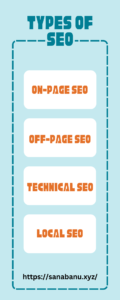Unlock the Power of SEO: How to Maximize Your Reach
Unlock the Power of SEO: How to Maximize Your Reach
Introduction:
In today’s digital age, where the online marketplace is fiercely competitive, having a strong online presence is paramount for businesses. Search Engine Optimization (SEO) plays a pivotal role in ensuring that your website ranks well on search engine results pages (SERPs), driving organic traffic and potential customers to your site. However, SEO can be a complex and ever-evolving field, often leaving beginners feeling overwhelmed. In this article, we’ll break down the fundamentals of SEO and provide practical tips to help you navigate this dynamic landscape.
Understanding SEO
SEO is the practice of optimizing your website to increase its visibility and ranking on search engines like Google, Bing, and Yahoo. When users search for information related to your business, products, or services, you want your website to appear at the top of the search results, as higher rankings typically lead to more clicks and traffic.
Search engines use complex algorithms to determine the relevance and authority of web pages, considering factors such as keywords, content quality, backlinks, user experience, and website performance. By optimizing these elements, you can improve your website’s chances of ranking higher in search results.
Key Components of SEO
- Keywords: Keywords are the foundation of SEO. These are the words and phrases that users type into search engines when looking for information. Conduct keyword research to identify relevant terms with high search volume and low competition. Incorporate these keywords naturally into your website’s content, including titles, headings, meta descriptions, and body text.
- Quality Content: Content is king in the world of SEO. Create high-quality, informative, and engaging content that addresses the needs and interests of your target audience. Regularly update your website with fresh content to keep visitors engaged and encourage search engines to crawl and index your site more frequently.
- On-Page Optimization: Optimize various on-page elements of your website, such as title tags, meta descriptions, headings, URLs, and image alt texts. Ensure that each page is properly structured, making it easy for search engines to understand the relevance and context of your content.
- Off-Page Optimization: Off-page optimization involves building backlinks from other reputable websites to yours. Quality backlinks from authoritative sources signal to search engines that your site is trustworthy and valuable, potentially boosting your rankings. Focus on earning natural backlinks through content promotion, guest blogging, influencer outreach, and social media engagement.
- User Experience (UX): User experience is a critical factor in SEO. Ensure that your website is mobile-friendly, fast-loading, easy to navigate, and provides a seamless browsing experience across devices. A positive user experience not only improves your search rankings but also enhances customer satisfaction and retention.
- Technical SEO: Technical SEO involves optimizing the technical aspects of your website to improve its crawlability, indexability, and overall performance. This includes optimizing site speed, fixing broken links, implementing HTTPS security, creating XML sitemaps, and using structured data markup to enhance search engine understanding.
Measuring SEO Success
Tracking and analyzing key metrics is essential to gauge the effectiveness of your SEO efforts. Utilize tools like Google Analytics, Google Search Console, and third-party SEO platforms to monitor organic traffic, keyword rankings, backlink profile, on-page engagement, and conversion rates. Regularly review these metrics to identify areas for improvement and refine your SEO strategy accordingly.
Here are some key types of SEO:
- On-Page SEO: On-page SEO focuses on optimizing individual web pages to improve their search engine rankings and attract more organic traffic. This includes optimizing elements such as meta tags (title tags, meta descriptions), headings (H1, H2, H3), URL structure, keyword placement, content quality, internal linking, and image optimization. On-page SEO ensures that each page is relevant, authoritative, and easily understandable by search engines.
- Off-Page SEO: Off-page SEO involves activities conducted outside of your website to improve its authority, relevance, and reputation in the eyes of search engines. The primary focus of off-page SEO is building high-quality backlinks from other reputable websites. Backlinks serve as votes of confidence for your site, signaling to search engines that your content is valuable and trustworthy. Off-page SEO also includes social media marketing, influencer outreach, guest blogging, online reputation management, and brand mentions.
- Technical SEO: Technical SEO deals with the technical aspects of website optimization to ensure that search engines can crawl, index, and understand your site’s content effectively. Technical SEO focuses on elements such as website speed, mobile-friendliness, site architecture, URL structure, XML sitemaps, canonical tags, schema markup, HTTPS security, and website crawlability. By optimizing these technical factors, you can enhance your site’s visibility and performance in search results.
- Local SEO: Local SEO is crucial for businesses that serve a specific geographic area or have physical locations. It involves optimizing your website and online presence to appear in local search results when users search for products or services near their location. Local SEO strategies include creating and optimizing Google My Business listings, obtaining local citations, getting reviews and ratings, optimizing local keywords, and ensuring consistency of NAP (Name, Address, Phone number) information across online directories.
Conclusion
While SEO may seem daunting at first, mastering the basics and staying updated on industry trends and best practices can help you achieve sustainable success in the digital landscape. By focusing on providing valuable content, optimizing your website for search engines and users, and continuously refining your strategy based on data-driven insights, you can enhance your online visibility, attract more organic traffic, and ultimately grow your business. Remember, SEO is a long-term investment, so be patient, persistent, and proactive in your approach.
CLICK to see another interesting blog.
What is SEO, and why is it important?
SEO stands for Search Engine Optimization. It’s the practice of optimizing your website to rank higher in search engine results pages (SERPs) organically. It’s essential because it helps increase visibility, drive traffic, and improve the overall user experience.
What are the key components of SEO?
The key components of SEO include on-page optimization (content, meta tags, URL structure), off-page optimization (backlinks, social signals), technical SEO (site speed, mobile-friendliness, site architecture), and user experience (site navigation, readability, engagement).
What are some common SEO mistakes to avoid?
Common SEO mistakes include keyword stuffing, neglecting mobile optimization, ignoring technical issues, using irrelevant or low-quality backlinks, and neglecting user experience. It’s essential to stay updated with search engine algorithm changes and best practices to avoid these pitfalls.


